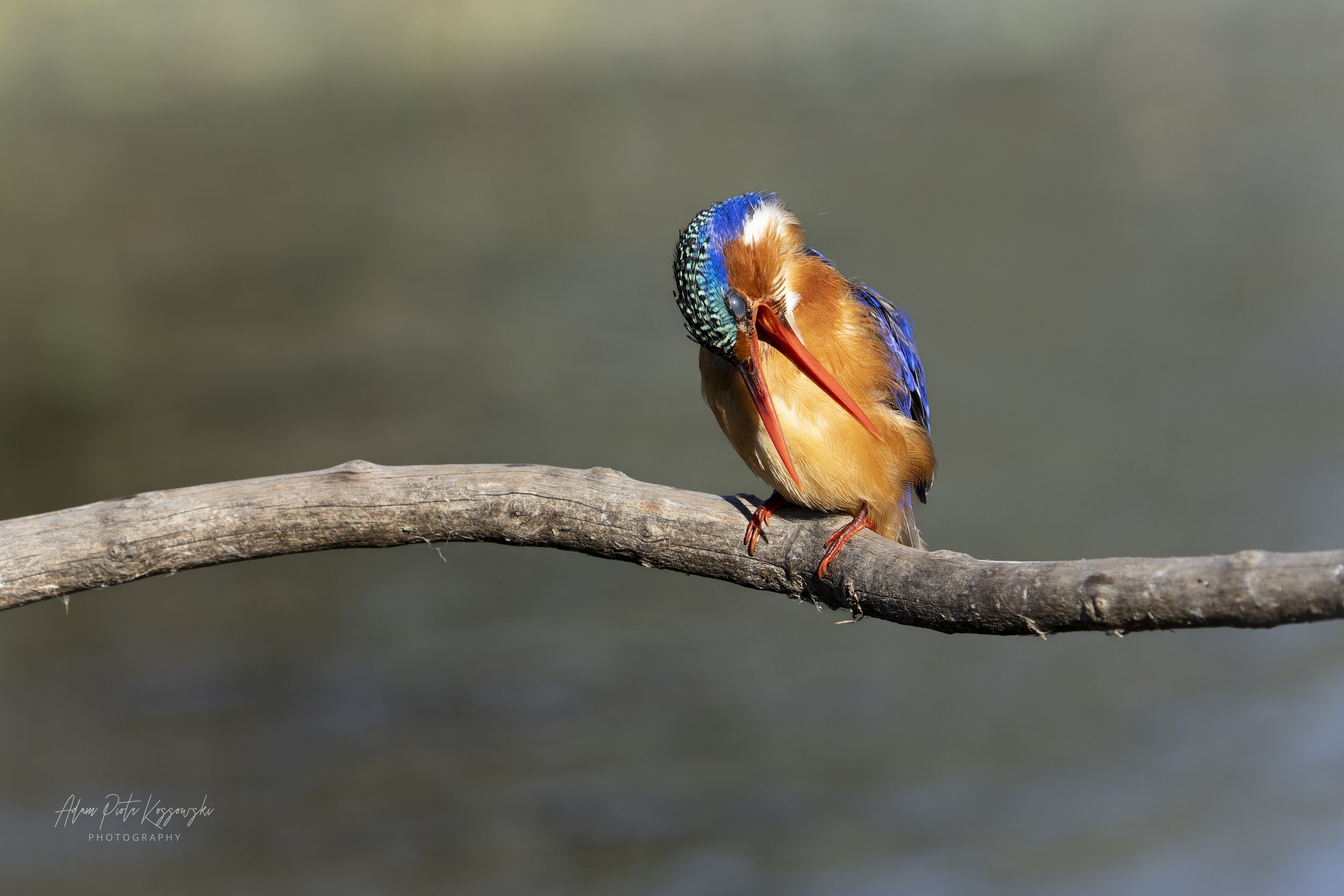Snap
Sony A1, FE 200-600mm F5.6-6.3 G OSS, FL: 404mm, S: 1/1,600s, A: F7.1, ISO: 640.
A fleeting moment captures the malachite kingfisher preening itself.
It took a microsecond for his head to flash down and his beak to open to scrape the water droplets off his soaked feathers. Just as quickly, he sat back, turning his attention back to the water below. He had dived in that spot for a few minutes, seemingly missing the prey - a small minnow fish that appeared and just as quickly disappeared between the floating leaves. The fish had survived the encounter for now, but he was patient and practicing his technique. Again, he preened himself as he prepared for another dive. His head quietly locked in focus, bobbing up and down to coordinate the moment of his attack. The fish was just at the edge, its silvery shape now contrasting subtly at the surface, reflecting his direction. It was all a sudden moment as he dove, the water again splashing as he instantly hit the shape. Success! His head appeared within that moment, the fish clearly grasped in his long red beak, his wings waving in a blur, lifting himself back to his branch.
Interesting Facts About the Malachite Kingfisher
Dietary Habits: Malachite Kingfishers exhibit a varied diet, encompassing fish, prawns, crabs, aquatic insects, larvae, and frogs. Their expertise lies in piscine predation, where they utilize preferred perches positioned 20 to 50 cm above slow-moving water bodies to scan for prey. Once sighted, they execute precise diving maneuvers to secure their catch.
Territorial Behavior: These birds display territorial aggression, employing bill-grappling, aerial pursuits, and threat displays to defend their territory against intruders. Notably, disturbances may prompt the raising of the crest on their forehead and crown.
Reproductive Patterns: Malachite kingfishers exhibit monogamous mating behavior and establish strong pair bonds. Breeding seasons vary geographically, often coinciding with periods of heightened fish abundance. During courtship, males perform elaborate flight displays accompanied by vocalizations and engage in "courtship feeding" rituals. Nest construction involves the excavation of burrows along riverbanks or beneath fallen trees, with both sexes contributing. Clutches typically consist of 3-6 eggs, which are incubated by both parents for approximately 14 to 16 days. Upon hatching, chicks are cared for and fed by both parents until they fledge, typically around 22–25 days post-hatching.
Habitat and Conservation Status: Malachite Kingfishers are habitat specialists, predominantly found near water bodies ranging from small streams and sewage ponds to larger rivers, dams, and estuaries. They are adaptable to habitats with abundant aquatic vegetation, which provides essential perches for hunting. Despite facing no significant threats currently, their population remains subject to ongoing monitoring, with their conservation status evaluated as Least Concern on the IUCN Red List.
Feathered Friends Collection
Welcome to our feathered friends, with their flights of fancy, twitchers' delight, and the lightest touch.
Ever-present in our lives, birds fill the skies, settle in tree branches, and thrive on the ground. Their movements fill us with delight and awe, and their silence is broken by delightful songs or anxious craws. This collection celebrates these moments in time with our feathered friends.

